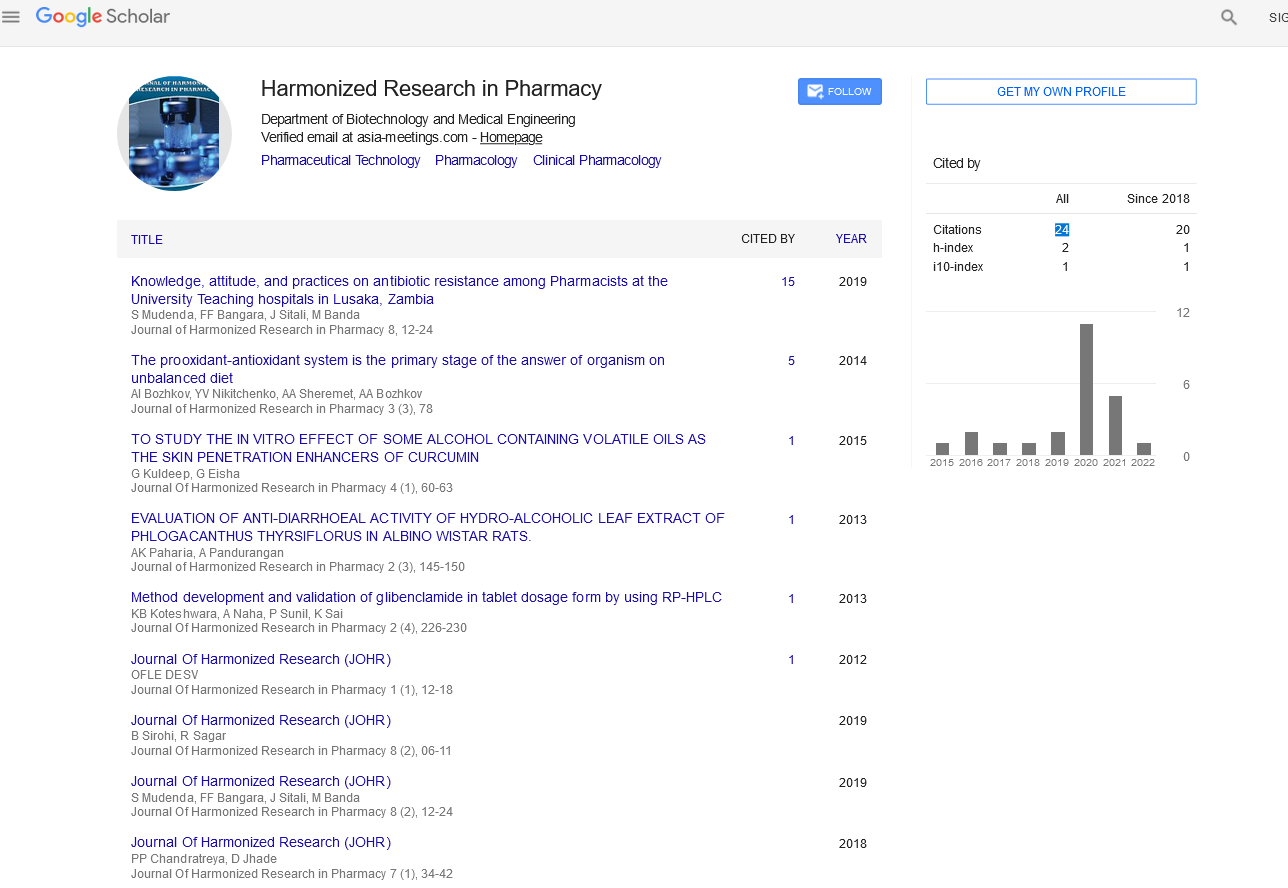Commentary - (2022) Volume 11, Issue 4
APPLICATIONS OF ORGANIC AND PHARMACEUTICAL COMPOUNDS
Maurer Grace*Received: Nov 28, 2022, Manuscript No. JHRP-22-84139; Editor assigned: Dec 02, 2022, Pre QC No. JHRP-22-84139 (R); Reviewed: Dec 16, 2022, QC No. JHRP-22-84139; Revised: Dec 23, 2022, Manuscript No. JHRP-22-84139 (R); Published: Dec 30, 2022, DOI: 10.30876/2321-0958.22.11.194
About the Study
The elements of the substance are atoms, neutral molecules, or ions. Despite attraction forces between them, these constituent elements operate more or less independently in the gas phase. The attractive forces between these entities are comparatively quite weak since they have enough kinetic energy. While they might briefly tug on one another, they easily disengage from one another to keep moving forward. Positive ions and negatively charged electrons are about equal in number in plasma, which is a heated ionised gas. Plasmas are regarded as a distinct fourth state of matter since their properties differ greatly from those of regular neutral gases.
The kinetic energy decreases as the material cools until it reaches a point where it is insufficient for them to move randomly. At this point, attraction forces take control and hold the entities close to one another. The material is said to have compressed into the liquid form because, while having enough kinetic energy to travel everywhere, over one another, and underneath one another, they are now constrained to stay close to one another. When the material has sufficiently cooled, the attractive forces finally become so strong that the components cling to one another tenaciously. This tendency for the components to group together in order to form as many contacts as possible leads to a conformation and arrangement with the least amount of energy.
They stop moving in a translational direction during the course, and the material stiffens. Now let’s think about how the parts of these rigid materials should be arranged to optimise the attractive forces between them and achieve solid state. The arrangement of atoms, molecules, or ions that make up solids divides the solid state roughly into two classes: crystalline substances have their constituents arranged in a regular manner, while amorphous solids lack long-range organisation in the positions of atoms, molecules, and ions.
In these two classifications, solids display a rather astounding range of traits and behaviours. Some biological tissues like fat are present in amorphous solids like foams, gels, colloids, mayonnaise, rubber, and waxes, whereas examples of crystalline solids include water ice, dry ice, sugar, metals, and more. The molecules are held together by weak van der Waals forces when they are amorphous, and they rapidly disintegrate. As a result, these solids typically have rather wide melting points and a mushy consistency. Molecules and atoms arrange themselves in long- range order with repetition of a specific interaction pattern when they are in the crystalline form. They exhibit distinct patterns of strong to weak van der Waals forces, making them stiff and brittle with high melting temperatures.
Supramolecular chemistry
It is a field of chemistry that deals with molecular assemblages that form as a result of intermolecular interactions. When creating supramolecular structures, interactions other than covalent bonds are included. For instance, hydrogen bonding, metal coordination, and -interactions are used to join separate building units. It significantly advances the fields of biological sciences, nanotechnology, green chemistry, material science, catalyst, and nanotechnology.
Non-covalent interactions
Numerous molecular complexes in the biological, pharmaceutical, chemical, physical, and materials sciences, among others, rely heavily on noncovalent interactions as their main source of stability. Noncovalent interactions are pervasive in chemistry. Crystal engineering and supramolecular chemistry take advantage of the noncovalent interactions that hold molecules together in a crystal lattice whereas classical chemistry concentrates on the covalent bond. These forces include electrostatic effect, hydrogen bonding, metal coordination, hydrophobic forces, van der Waals forces, and hydrophobic interactions.
Supramolecular synthon
The fundamental building blocks in crystal engineering are supramolecular synthons. In 1995, G. R. Desiraju first proposed the idea of the synthon. It explains how various functional groups interact with one another and aid in the formation of crystals during the crystallisation process. E. J. Corey initially used the term “synthon” in a review article titled “General Methods for Construction of Complicated Compounds” published in 1967 to ease the synthesis of complex molecules and natural products. “Structural units within molecules that can be produced and/or assembled by known or plausible synthetic procedures,” was how he defined synthon.

Google Scholar citation report
Citations : 147
Journal of Harmonized Research in Pharmacy received 147 citations as per google scholar report









